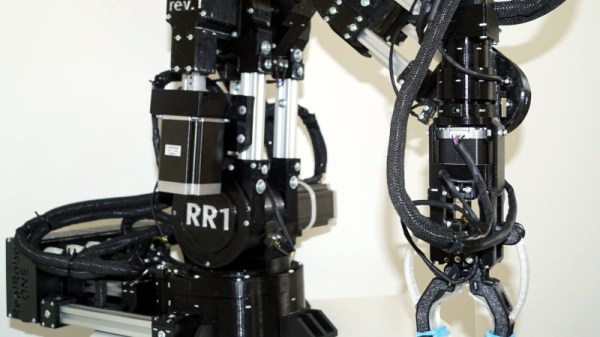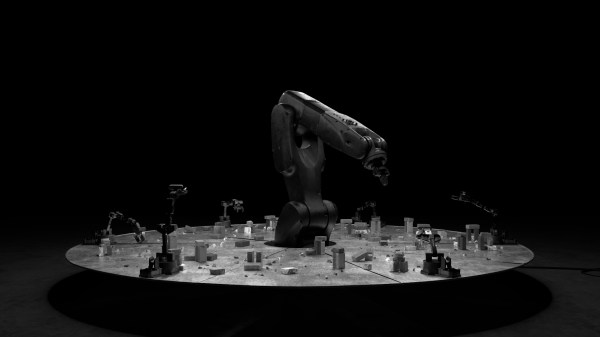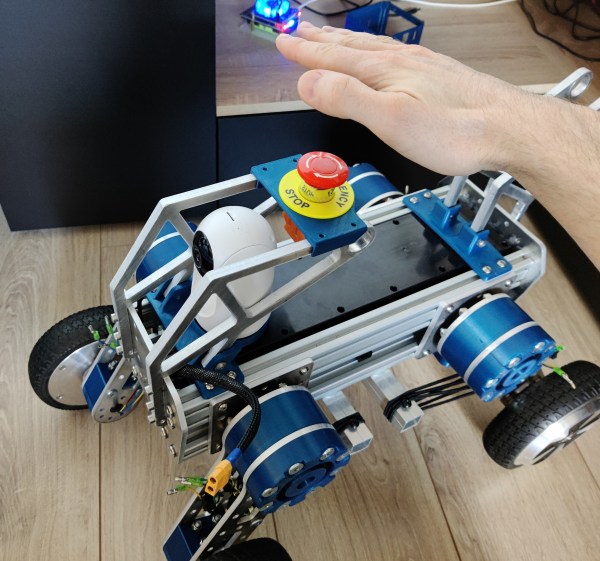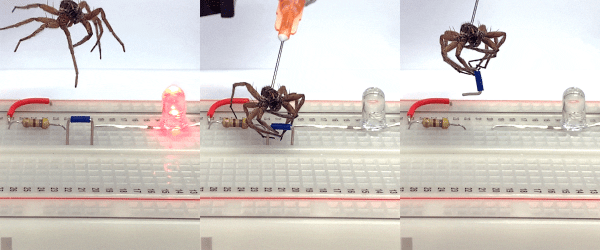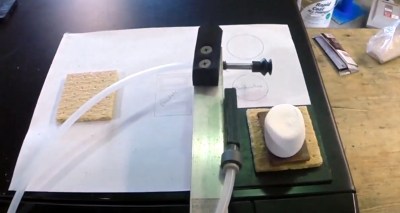Most of the robot arms we see are cool but little more than toys. Usually, they use RC servos to do motion and that’s great for making some basic motion, but if you want something more industrial and capable, check out [Pavel’s] RR1 — Real Robot One. The beefy arm has six degrees of freedom powered by stepper motors and custom planetary gearboxes. Each joint has an encoder for precise position feedback. The first prototype is already working, as you can see in the video below. Version two is forthcoming.
When you see the thing in action, you can immediately tell it isn’t a toy. There are four NEMA23 steppers and three smaller NEMA17 motors. While there are 3D printed parts, you can see a lot of metal in the build, also. You can see a video of the arm lifting up a 1 kilogram barbell and picking up a refreshing soft drink.

